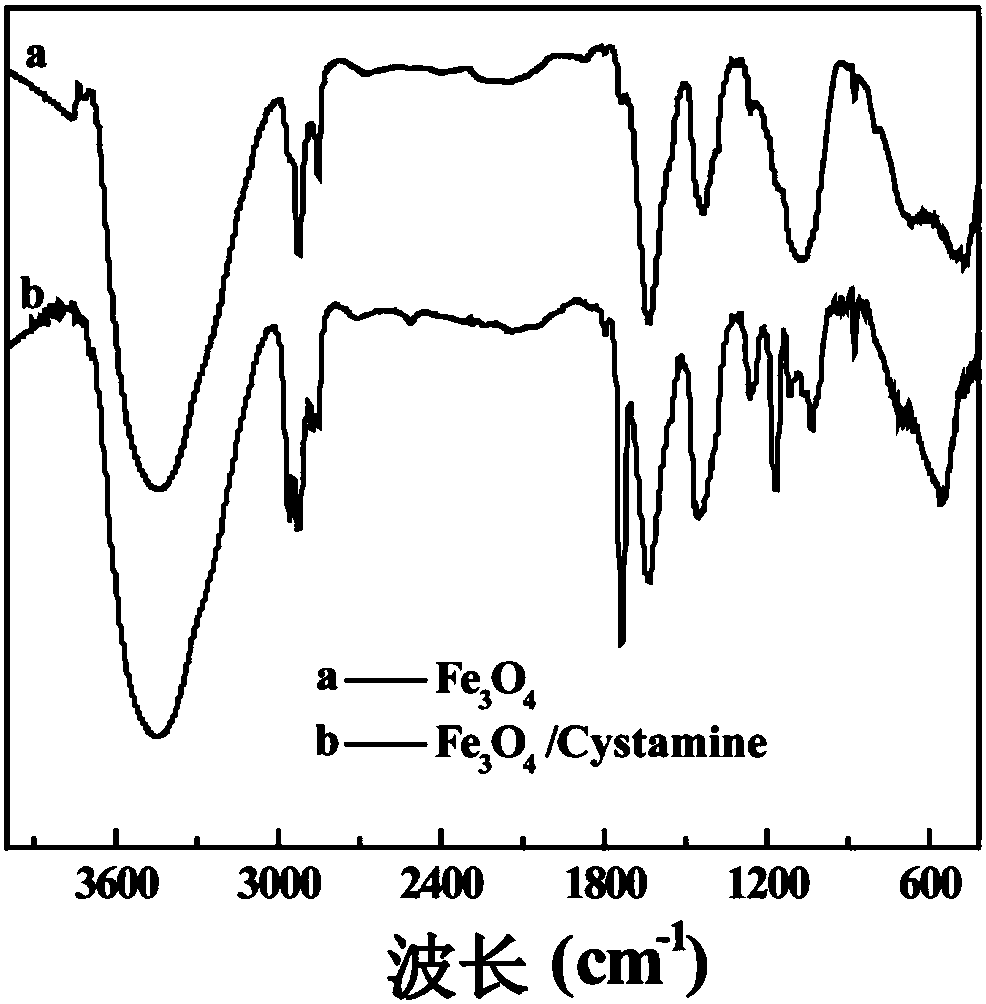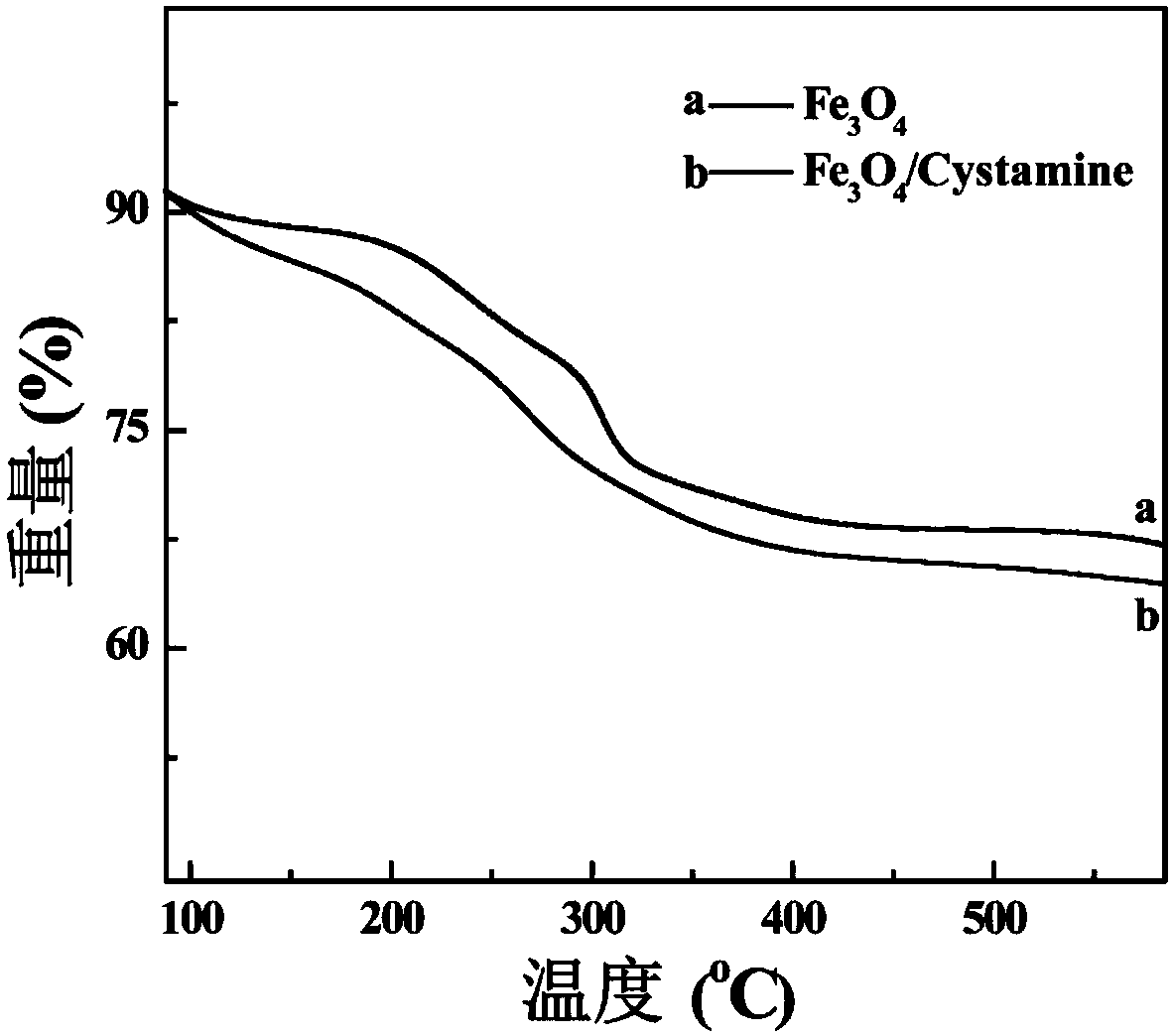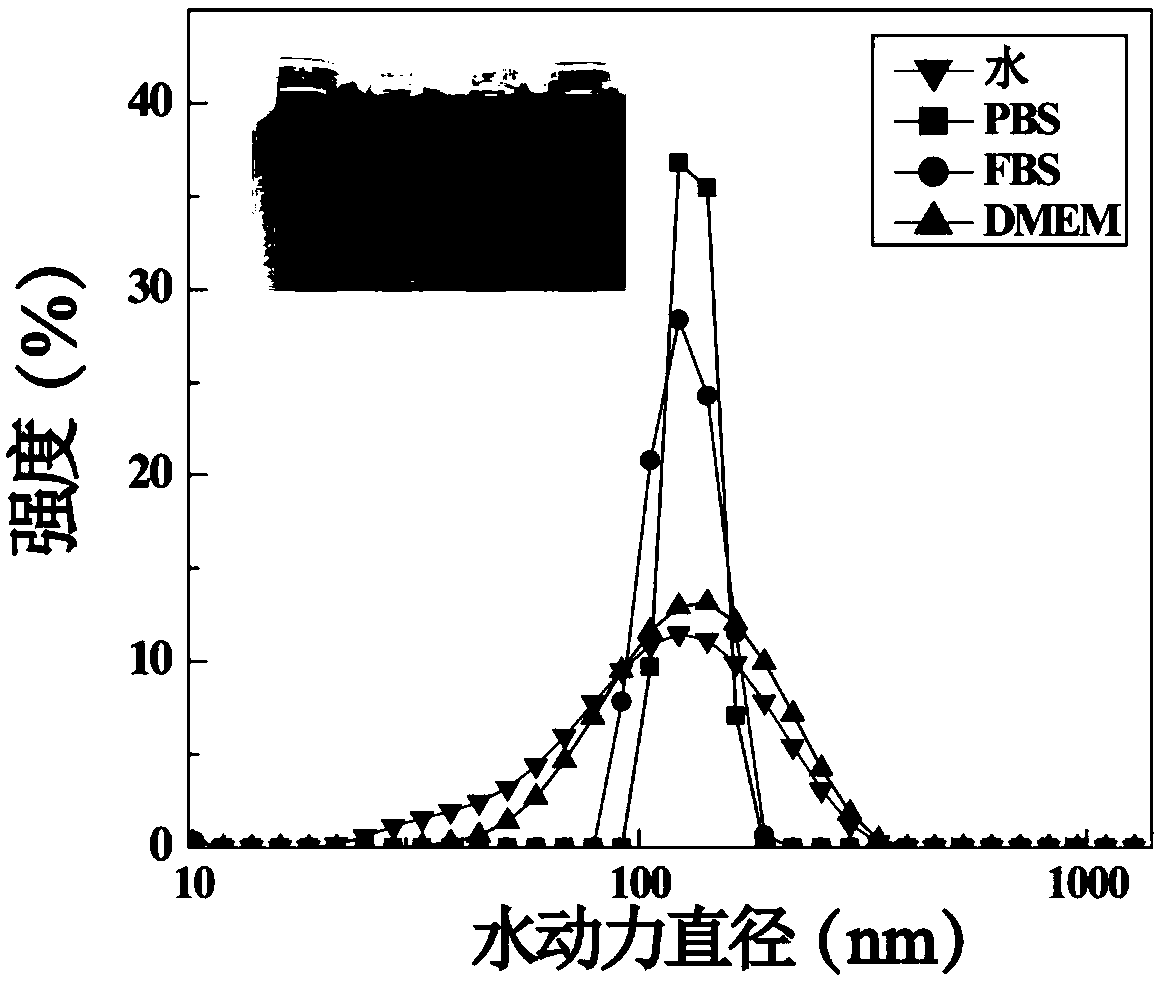Preparation method of Fe3O4 nanoparticles with cluster structure
A technology of ferric tetroxide and nanoparticles, which is applied in the directions of preparations, pharmaceutical formulations, and emulsion delivery for in vivo experiments, can solve the problems of dual-modal MRI diagnosis without ferric tetroxide nanoparticles, and achieve MR. The effect of imaging signal enhancement
- Summary
- Abstract
- Description
- Claims
- Application Information
AI Technical Summary
Problems solved by technology
Method used
Image
Examples
Embodiment 1
[0040] (1) Dissolve 0.65g of anhydrous ferric chloride in 40mL of diethylene glycol (also known as diethylene glycol, DEG), add 0.47g of sodium citrate (Na 3 Cit), stirred at 80°C for 1 h in an air atmosphere, and then added 1.312 g of anhydrous sodium acetate powder after the sodium citrate was completely dissolved, and continued to stir until the sodium acetate powder was completely dissolved, then transferred the solution to a 50 mL autoclave, and React at 200°C for 4 hours; after the reaction, naturally cool to room temperature, transfer the product to a 50mL centrifuge tube and centrifuge at 8500rpm for 15 minutes, discard the supernatant, redissolve with absolute ethanol, centrifuge at 8500rpm for 15 minutes, repeat the operation 3 times, The precipitate was then dried at 60°C to obtain ultra-small Fe 3 o 4 Nanoparticles, ultra-small iron oxide nanoparticles with sodium citrate stabilized surfaces.
[0041] (2) Ultra-small Fe in step (1) 3 o 4Nanoparticles (30mg) wer...
Embodiment 2
[0044] Get ultra-small Fe in embodiment 1 respectively 3 o 4 Fe nanoparticles and clusters 3 o 4 / 2 mg of Cystamine nanoparticles were dissolved in 2 mL of ultrapure water to obtain a nanoparticle suspension, which was uniformly ultrasonicated, and the surface potential and hydrated particle size were measured. The test results are shown in Table 1. The test results show that: the prepared ultra-small Fe 3 o 4 Fe nanoparticles and clusters 3 o 4 The surface potentials of / Cystamine nanoparticles were -33.2 and -21.4mV respectively; the hydrated particle diameters were 25.6 and 134.4nm. From the experimental results, the surface potential of monodisperse ultra-small iron oxide nanoparticles increases after cross-linking into clusters, and the hydrodynamic diameter increases significantly. Changes in surface potential and hydrated particle size indicate cluster Fe 3 o 4 / Cystamine nanoparticles have been formed.
[0045] Table 1
[0046] sample
Embodiment 3
[0048] Get ultra-small Fe in embodiment 1 respectively 3 o 4 Fe nanoparticles and clusters 3 o 4 / Cystamine nanoparticles 5mg carry out infrared spectrum test (such as figure 1 shown) and thermogravimetric analysis (as figure 2 shown). By analyzing the infrared spectrum (such as figure 1 ), 466-601cm -1 The characteristic absorption peaks appearing on the Fe 3 o 4 Stretching vibration of upper Fe-O, 3451cm -1 The nearby peak is the stretching vibration peak of OH on the water molecule, 2931cm -1 and 2800cm -1 The nearby characteristic absorption peak is attributed to the stretching vibration of methylene in sodium citrate. At the same time at 1396-1642cm -1 It is the stretching vibration of C=O. And the strong absorption peak of 1736 in the curve b belongs to the amino group and Fe of cystamine dihydrochloride 3 o 4 An amide bond formed by binding carboxyl groups on the surface. 551cm -1 The characteristic peak at the position is obviously enhanced, which s...
PUM
 Login to View More
Login to View More Abstract
Description
Claims
Application Information
 Login to View More
Login to View More - R&D
- Intellectual Property
- Life Sciences
- Materials
- Tech Scout
- Unparalleled Data Quality
- Higher Quality Content
- 60% Fewer Hallucinations
Browse by: Latest US Patents, China's latest patents, Technical Efficacy Thesaurus, Application Domain, Technology Topic, Popular Technical Reports.
© 2025 PatSnap. All rights reserved.Legal|Privacy policy|Modern Slavery Act Transparency Statement|Sitemap|About US| Contact US: help@patsnap.com



